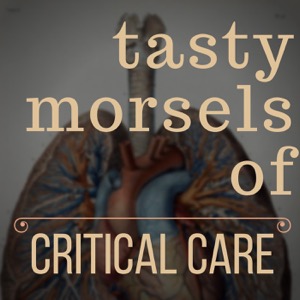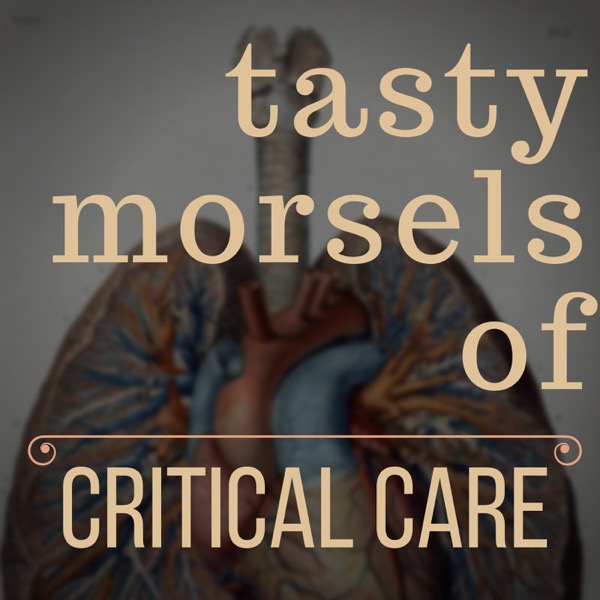Tasty Morsels of Critical Care 039 | Management of raised ICP
Tasty Morsels of Critical Care - En podcast af Andy Neill - Mandage

Welcome back to the tasty morsels of critical care podcast. This is part of Oh’s Manual Chapter 77 on head injury and we covered ICP monitoring before in number 20. A key principle here is cerebral perfusion pressure or CPP. This is easily calculated at the bedside as MAP-ICP. Of course this is only easy if you actually have an ICP monitor. The CPP should probably be around 60-70 which assuming your patient is unconscious means that the ICP is probably north of 20mmHg and therefore your MAP should be around the 80-90mmHg range. If you actually have a monitor then you can be much more scientific about your MAP target. A moment’s thought about the complexities and unknowns of cerebral blood flow and perfusion in the acutely head injured patient should hopefully make you realise that targeting a CPP is an incredibly blunt tool for so fine tuned an instrument, but given the lack of anything better and strong recommendations from international guidelines then we better stick to it. Oh splits TBI into two phases which I find useful as a concept even if I still find it unclear when a patient transitions from one phase to the next. * the early hypo-perfusion phase: after a bump to the noggin there is a rise in pressure from extra axial lesions or oedema that necessitates a bump in your MAP to keep CPP in the right range. * the hyperaemic phase: about a quarter will have this at around day 3-7 and it seems ill defined but it’s suggestive you can lower your MAP targets here a bit Overall the basic bundle of interventions in the ICU for ICP include: * sedation – this is needed for the tube but also it reduces metabolic rate considerably and reduces ICP. There is no clear advantage of one agent over another although the ileus inducing agent thiopentone is useful in refractory settings * SUP – this is one of the groups particularly at risk of GI bleeding * keeping the head up 30-40 degrees can promote venous drainage and indeed you’ll see ET tubes taped to the cheeks rather than circumferential ties in many neurosurgical units. * DVT prophylaxis should be given – the timing of which is a topic in itself and frequently delayed longer than it should be. The phrase used typically is when the appearances on CT are “stable” whatever that means but it probably does include the absence of fresh bleeding at the very least. * CO2 should be in the normal range and same goes for oxygenation. Now is not the time for permissive hypercapnoea and so for your patients with head injury and ARDS this can be really challenging The BTF guidance is the key guideline document that should be referenced and it is well worth a read for any exam candidate and indeed any clinician dealing with TBI. The following summarises some of the headlines. Decompressive craniectomy * a bifrontal cranitoyomy is not recommended to improve neuro outcomes, which is a way of acknowledging the important DECRA trial. * if done then a large frontotemporal craniectomy is recommended * of note these were published before the results of the RESCUE-ICP were available Hypothermia * there is a substantial literature and a compelling physiologic argument that cooling would be good * however a sequence of trials have put this to rest with the key ones being * Eurotherm 2015 * RCT ICP>20, 400 pts * small impact on ICPs

